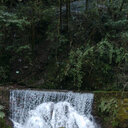Protective effects of Ligustrazine, Kakonein and Panax Notoginsenoside on the small intestine and immune organs of rats with severe acute pancreatitis.
Keywords
Abstract
BACKGROUND
Severe acute pancreatitis (SAP) is characterized by fatal pathogenic conditions and a high mortality. It is important to study SAP complicated with multiple organ injury. In this study we compared the protective effects of three traditional Chinese medicines (Ligustrazine, Kakonein and Panax Notoginsenoside) on the small intestine and immune organs (thymus, spleen and lymph nodes) of rats with SAP and explored their mechanism of action.
METHODS
One hundred forty-four rats with SAP were randomly divided into model control, Ligustrazine-treated, Kakonein-treated, and Panax Notoginsenoside-treated groups (n=36 per group). Another 36 normal rats comprised the sham-operated group. According to the different time points after operation, the experimental rats in each group were subdivided into 3-, 6- and 12-hour subgroups (n=12). At various time points after operation, the mortality rate of rats and pathological changes in the small intestine and immune organs were recorded and the serum amylase levels were measured.
RESULTS
Compared to the model control groups, the mortality rates in all treated groups declined and the pathological changes in the small intestine and immune tissues were relieved to different degrees. The serum amylase levels in the three treated groups were significantly lower than those in the model control group at 12 hours. The pathological severity scores for the small intestinal mucosa, thymus and spleen (at 3 and 12 hours) in the Ligustrazine-treated group, for the thymus (at 3 and 12 hours) and spleen (at 3 and 6 hours) in the Kakonein-treated group, and for the thymus (at 3 hours) and spleen (at 3 hours) in the Panax Notoginsenoside-treated group were significantly lower than those in the model control group. The pathological severity scores of the small intestinal mucosa (at 6 and 12 hours) and thymus (at 6 hours) in the Ligustrazine-treated group were significantly lower than those in the Kakonein- and Panax Notoginsenoside-treated groups.
CONCLUSIONS
All the three traditional Chinese drugs significantly alleviated the pathological changes in the small intestine and immune organs of SAP rats. Ligustrazine was the most effective one among them.




